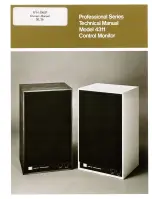
E2660-CO-NO2
Rev 06.04.2021
Operating conditions
The device should be used both in a non-hazardous area at the atmospheric pressure
(85...110 kPa), and relative humidity in the range 15...90%, and in a basic electromagnetic
environment, where the latter is defined in EN 61326-1. Avoid strong mechanical shock and
vibrations. Avoid corrosive atmosphere and areas highly contaminated with dust, oil mist,
etc. Keep the instrument away from direct sunlight. A sudden temperature or humidity
change might affect the sensitivity of the sensor.
Installation guidelines
Before proceeding with the installation it is mandatory to read the Safety requirements
section and make sure to comply with all listed instructions. Installation standards EN
60079-29-2 and EN 45544-4 are also recommended for further instructions and related
information about the installation. During the installation of the transmitter the following
points must be considered:
●
Application (the instrument is intended for leakage control.)
●
Properties of the space under investigation (room geometry, direction, and
velocity of airflows, etc.),
●
Carbon monoxide has practically the same density as air. Nitrogen dioxide is 1.6
times heavier than air, but in the underground parking, it rises to the ceiling with
hot exhaustion gases, so the sensor should be located at 1.2...1.5 m from the
floor in order to detect potentially dangerous concentration more quickly.
●
The device should be accessible for maintenance and repair.
The aforementioned conditions above will affect the coverage area of the device. however,
the coverage area for a detector-transmitter is usually between 2.5 to 5 meters radius.
For early leakage detection install the sensor as close as possible to the potential leakage
sources (flanges, valves, pressure reducers, pumps, etc.), taking into consideration other
points listed above.
Do not locate the detector close to ventilation openings and strong air currents. Avoid the
areas without air circulation (corners, niches) as well.
For general area monitoring without definite leakage sources, the detectors should be
distributed evenly in the room.
For personal safety control, the detectors are installed in the breathing zone (at the height
of the head of people or animals). The recommended sensor position is vertical, pointing
downwards.
8







































